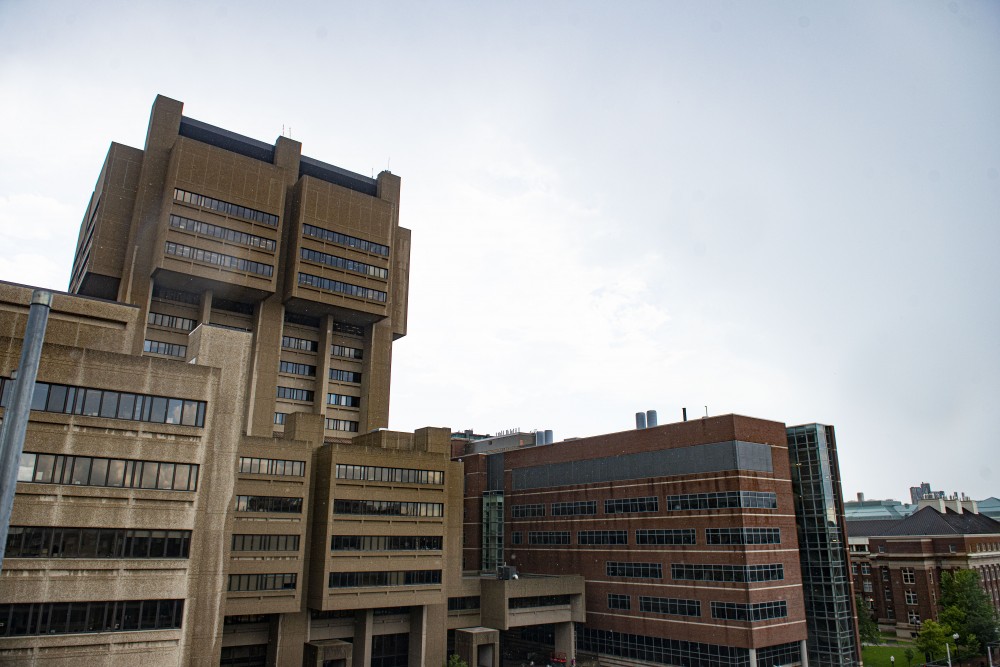For the second time in its history, the University of Minnesota will appear before the U.S. Supreme Court on Monday to argue a case that will affect medical residents across the country.
At the heart of the case brought by the University and the Mayo Clinic against the U.S. government is the question: Are medical residents who work more than 40 hours a week student employees?
If the court rules in the UniversityâÄôs favor, medical schools across the country stand to save millions of dollars a year, and residents could see some extra cash in their pockets.
The government currently collects roughly $700 million per year in social security and Medicare taxes, known as FICA taxes, from medical residents and their employers.
University residents currently pay about $3,060 in FICA taxes, part of which is covered by the school.
Student employees are generally exempted from paying the taxes, and the University and Mayo contend medical residents should also fall under this exemption, University General Counsel Mark Rotenberg said.
But some worry that if medical residents are classified as student employees, it could have unintended consequences on how they are viewed and compensated, said John Brockman, president of the American Medical Student Association.
The University won a separate court case in 1998 which defined medical residents as student employees for the purposes of FICA taxes and led to $48 million in refunds to residents.
In 2004, the Internal Revenue Service changed its regulation to exclude full-time employees from the student exemption, leading to the current Supreme Court case.
“We are challenging whether or not the IRS can make a regulation that categorically bars the medical residents who work for 40 hours a week or more from student status,” Rotenberg said.
Although Rotenberg will be present during the oral arguments, the University hired Washington, D.C.-based attorney Theodore Olson to argue the case. Olson is a former U.S. solicitor general who argued Bush v. Gore and the suit challenging Proposition 8.
The court should decide the case sometime this spring, Rotenberg said.
On Monday, both sides will present oral arguments during an hour-long session where the justices throw questions at attorneys on specifics of the case, said political science professor Tim Johnson.
On average, the justices ask 113 questions during the session âÄî almost two per minute. It will be the first time the justices discuss the case with one another, Johnson said.
In written briefs filed with the court, Mayo and the University argued that medical residents are students because they attend classes âÄî whether they are just lectures or rounds with their attending physician âÄî and engage in patient care for educational purposes.
Brockman, who is also a fourth-year medical student at Case Western Reserve University in Cleveland, said residents are the “lifeblood” of hospitals and have much more responsibility when it comes to patient care than medical students.
“While medical residents are lifelong learners, itâÄôs important we donâÄôt confuse lifelong learners with students,” he said. “To call [residents] students is kind of disingenuous.”
Residents are employees, Brockman said, and as a result are entitled to a number of benefits like sick leave, maternity leave and health, liability and disability insurance.
If residents were considered students, it could affect their status as employees and change their relationship with the hospital, he said.
“One serious consideration is that the incentive to pay [residents] goes down if you think of them as students versus employees,” Brockman said.
The University and Mayo also argued in briefs that judging student-employee status based on the number of hours worked is “arbitrary and unreasonable.” Instead, employees should be qualified as students based on what theyâÄôre learning, not how much time they spend doing it.
In administrative law cases like this, the court often sides with the government agencyâÄôs interpretation of the regulation, although it will overturn the regulation if itâÄôs found unconstitutional, said Johnson, whoâÄôs also an adjunct law professor.
“This particular court, the [Chief Justice John] Roberts court, is much more likely to find for the federal government than to find for an individual who is suing for this sort of labor claim,” Johnson said. “This Supreme Court is much more pro-executive power than many other courts in the past.”
















